
This week I am departing from my usual format to bring you excerpts from a talk given by Samuel Eisenstadt, the former Research Chairman of Value Line Inc. in front of a packed house of analysts and portfolio managers at a QWAFAFEW meeting in New York during April of last year. QWAFAFEW (The Quantitative Work Alliance For Applied Finance Economics And Wisdom) is a Quantitative Investment Society with chapters in New York, Princeton, Hartford, Boston, Washington DC, Chicago, Denver and San Francisco. The talk was given in a question and answer format. At the end of the presentation, I have added three questions that I asked Sam this week along with his answers.
Sam started his financial career at Value Line in 1946 as a proof reader, but was quickly recognized for his acumen with statistics. "In 1965 Eisenstadt persuaded Bernhard to switch from time series regression analysis to "cross-sectional", a procedure that studies relationships at a point in time rather than across time. This was a major shift that greatly improved the performance of the ranking system in subsequent years. The new system ranked about 1700 stocks relative to one another, based largely on measures of momentum for both earnings and price. In effect the system is designed to ride winners and avoid losers. Sam became the Research Chairman for Value Line in 1987 and held that position through the remainder of his career at Value Line, which came to an end in 2009. Sam remains active in investment research and is often quoted by Mark Hulbert in his Market Watch articles.
Special Meet of QWAFAFEW, New York
April 16, 2012
Question: Please describe the circumstances that lead to the development of the Value Line Timeliness Ranking System. What needs were perceived to need addressing? When it started, did you have any idea how long it would take to complete?
Answer: No, it was an open-ended research project for us. The purpose was to produce an improved system. We noticed that interrelationships between highly related variables frequently caused factors to drop out of regressions. An example of this was IBM, a consistently up-trending stock, where the lagged price became the most important factor.
Question: The academic literature references relative earnings and price ranks, EPS growth, price momentum, and earnings surprise as being factors in the model. It has also been noted that Value Line was the first known system to use earnings surprise as a factor. How did this factor become a part of the system?
Answer: A physics professor from Brooklyn Polytech, Professor Fabricant had detected that whenever an analyst's earnings projection (next 12 months) was raised, the relative price action of the stock subsequently improved. The question became: "How could we take advantage of this action in the Ranking System?" We believed that by examining the reason for the revision, we might improve the System. We found that, more often than not, the revision took place after an earnings release. Thus, by evaluating the earnings release, we could get a jump on the analyst revision itself. Hence the birth of the earnings surprise factor. It was tested, found significant, and introduced into the system prior to anyone else's use of this factor (to the best of our knowledge).
Question: The first famous article about the Value Line ranking system as an "anomaly" to the Efficient Market Theory being trumpeted by academics was called "Yes, Virginia, There Is Hope; Tests Of The Timeliness Ranking System" by Dr Fischer Black. Could you tell us how the article came about; what assistance you provided in helping him perform his tests, and any other things you think we might find interesting?
Answer: Dr. Black was invited by Arnold Bernhard to test our ranking system using any procedures and tests that he could think of. The result was "Yes Virginia, There Is Hope;". Value Line provided the computer power and Fischer was paid for his efforts. Several professors at the University of Chicago claimed that Dr. Black was "paid and quartered by Value Line", thus suggesting that his results were biased towards a favorable outcome for Value Line. Subsequent results of the ranking system for many years would appear to have validated Fischer Black's conclusions. Indeed, Value Line's ranking system results might have resulted in some modifications in the Capital Asset Pricing and Efficient Market discussion!
Question: Why do you enjoy tinkering with data so much?
Answer: I was always looking for numerical solutions to stock price forecasting. Discovery of statistical solutions and significance, particularly in stock price forecasting provided a thrill - even if only a momentary one, at times. It shed a bit of light on the darkness that enveloped the subject. I think the thrill would have been there, even if the subject under investigation were other than stock prices.
Question: What other ranking systems and models have you been involved in testing and attempting to develop over the years?
Answer: I've developed a technical ranking system. Most technicians do not use statistical methods to construct and test their systems. This is one field that requires such testing since much of their beliefs are not justified by mathematical verification. The technical system provides a small amount of explanatory power with mixed results, particularly in recent years. Relative strength is the primary tool, but applied using multiple regression techniques. Also, in the early years, a model was constructed in order to assign quality grades to companies based upon growth and price stability.
Question: Getting back to some of the efficient market debates, one of the reasons for the persistence of that theory is the simple empirical fact that the majority of mutual fund managers under-perform their benchmark indexes even before fees. What are the biggest factors contributing to this prolonged phenomena?
Answer: In a nutshell, success carries with it the risk of ultimate failure. This is also true to some extent of the Value Line timeliness rankings and other statistical approaches. Recent studies have indicated a shrinkage in the spread between good and bad companies making discrimination much more difficult. This may be due to the proliferation of ETFs which select companies on the basis of sector rather than individual company characteristics. These days, they buy the whole steel industry rather than only the "good" steel companies.
Question: You once had a debate with Dr. Rex Sinquefeld who went on to become the founder of Dimensional Fund Advisors. What was the nature of this debate? Are there any specific exchanges that you can recall?
Answer: The title of the debate was "The Efficiency of Capital Markets". The debate was held at the University of Chicago before a large group of MBA students. I was chosen, largely as a defender of the Value Line ranking system who argued that if our results at Value Line were accurate, then equity markets were not as efficient as claimed. This was largely a continuation of the old debate which Fischer Black had addressed in "Yes Virginia, There Is Hope". Either the Value Line results were misleading or the efficiency argument was faulty.
After a lengthy discussion of Value Line results, Rex argued that if Value Line numbers were correct, in time the results would deteriorate as more and more followers followed the system. There was a large element of truth in this as later results would show. My response at the time, which drew considerable laughter from the MBA students, was that as long as the University of Chicago continued to teach their market efficiency argument, there was hope for us! Later papers on the market efficiency argument tended to soften the position of the university's academics.
Question: Are there any areas of quantitative analysis that you would like to explore that just were not viable in the past due to lack of computing power or lack of data?
Answer: I feel computer power and lack of data do not represent a problem today. Indeed, there may be too much data available - so much so that I sometimes think it serves to confuse the issue.
Question: As more and more funds have turned towards quantitative analysis and rules-based investing have you seen any changes in the performance of your own models? Have factors that have suggested the potential for out performance in the past now stopped working? Also, have you seen the duration of the holding periods for the stocks that your model picks change?
Answer: Factors that have worked in the past have not worked well in recent years. Earnings growth and price momentum which worked extremely well prior to 2000 were largely displaced by value factors since 2000.
One does not hear of outstanding results from relative price strength in recent years. It appears that overall, the markets have become more efficient in recent years. The overall spread between outperforming stocks and underperformers has shrunk in the past 10-15 years. If good and bad stocks are performing more and more like the general market, it becomes more difficult to differentiate. Perhaps the influx of Phd's in mathematics and physicists from academia have accentuated this process. In addition, the phenomenal growth of ETF's, which tend to group stocks by industry and sector rather than by value or growth have contributed to the diminution of spread between attractive and unattractive. This may be carried too far and will probably reverse some day.
Question: If you could impart one pearl of wisdom to someone just starting out in the investment field, what would it be?
Answer: With respect to newcomers in the field, I would recommend - stick to it. I am optimistic. While answers may never be found, it's fun looking for them and potentially profitable even if one gets close.
Thank you Sam.
The above excerpts make up about half of the original Q&A session plus my three questions. The article is getting a bit long in the tooth now, though, so I will save the second half for some time in the future.
If you'd like to sample my research, sign up for The Sure Shot Letter, my monthly newsletter. As an added bonus, I will throw in access to my blog, The Daily Kill Sheet. The Sure Shot Letter provides long-term investment ideas on a monthly basis, while The Daily Kill Sheet provides short-term trading ideas twice weekly.
Sam started his financial career at Value Line in 1946 as a proof reader, but was quickly recognized for his acumen with statistics. "In 1965 Eisenstadt persuaded Bernhard to switch from time series regression analysis to "cross-sectional", a procedure that studies relationships at a point in time rather than across time. This was a major shift that greatly improved the performance of the ranking system in subsequent years. The new system ranked about 1700 stocks relative to one another, based largely on measures of momentum for both earnings and price. In effect the system is designed to ride winners and avoid losers. Sam became the Research Chairman for Value Line in 1987 and held that position through the remainder of his career at Value Line, which came to an end in 2009. Sam remains active in investment research and is often quoted by Mark Hulbert in his Market Watch articles.
Special Meet of QWAFAFEW, New York
April 16, 2012
Question: Please describe the circumstances that lead to the development of the Value Line Timeliness Ranking System. What needs were perceived to need addressing? When it started, did you have any idea how long it would take to complete?
Answer: No, it was an open-ended research project for us. The purpose was to produce an improved system. We noticed that interrelationships between highly related variables frequently caused factors to drop out of regressions. An example of this was IBM, a consistently up-trending stock, where the lagged price became the most important factor.
Question: The academic literature references relative earnings and price ranks, EPS growth, price momentum, and earnings surprise as being factors in the model. It has also been noted that Value Line was the first known system to use earnings surprise as a factor. How did this factor become a part of the system?
Answer: A physics professor from Brooklyn Polytech, Professor Fabricant had detected that whenever an analyst's earnings projection (next 12 months) was raised, the relative price action of the stock subsequently improved. The question became: "How could we take advantage of this action in the Ranking System?" We believed that by examining the reason for the revision, we might improve the System. We found that, more often than not, the revision took place after an earnings release. Thus, by evaluating the earnings release, we could get a jump on the analyst revision itself. Hence the birth of the earnings surprise factor. It was tested, found significant, and introduced into the system prior to anyone else's use of this factor (to the best of our knowledge).
Question: The first famous article about the Value Line ranking system as an "anomaly" to the Efficient Market Theory being trumpeted by academics was called "Yes, Virginia, There Is Hope; Tests Of The Timeliness Ranking System" by Dr Fischer Black. Could you tell us how the article came about; what assistance you provided in helping him perform his tests, and any other things you think we might find interesting?
Answer: Dr. Black was invited by Arnold Bernhard to test our ranking system using any procedures and tests that he could think of. The result was "Yes Virginia, There Is Hope;". Value Line provided the computer power and Fischer was paid for his efforts. Several professors at the University of Chicago claimed that Dr. Black was "paid and quartered by Value Line", thus suggesting that his results were biased towards a favorable outcome for Value Line. Subsequent results of the ranking system for many years would appear to have validated Fischer Black's conclusions. Indeed, Value Line's ranking system results might have resulted in some modifications in the Capital Asset Pricing and Efficient Market discussion!
Question: Why do you enjoy tinkering with data so much?
Answer: I was always looking for numerical solutions to stock price forecasting. Discovery of statistical solutions and significance, particularly in stock price forecasting provided a thrill - even if only a momentary one, at times. It shed a bit of light on the darkness that enveloped the subject. I think the thrill would have been there, even if the subject under investigation were other than stock prices.
Question: What other ranking systems and models have you been involved in testing and attempting to develop over the years?
Answer: I've developed a technical ranking system. Most technicians do not use statistical methods to construct and test their systems. This is one field that requires such testing since much of their beliefs are not justified by mathematical verification. The technical system provides a small amount of explanatory power with mixed results, particularly in recent years. Relative strength is the primary tool, but applied using multiple regression techniques. Also, in the early years, a model was constructed in order to assign quality grades to companies based upon growth and price stability.
Question: Getting back to some of the efficient market debates, one of the reasons for the persistence of that theory is the simple empirical fact that the majority of mutual fund managers under-perform their benchmark indexes even before fees. What are the biggest factors contributing to this prolonged phenomena?
Answer: In a nutshell, success carries with it the risk of ultimate failure. This is also true to some extent of the Value Line timeliness rankings and other statistical approaches. Recent studies have indicated a shrinkage in the spread between good and bad companies making discrimination much more difficult. This may be due to the proliferation of ETFs which select companies on the basis of sector rather than individual company characteristics. These days, they buy the whole steel industry rather than only the "good" steel companies.
Question: You once had a debate with Dr. Rex Sinquefeld who went on to become the founder of Dimensional Fund Advisors. What was the nature of this debate? Are there any specific exchanges that you can recall?
Answer: The title of the debate was "The Efficiency of Capital Markets". The debate was held at the University of Chicago before a large group of MBA students. I was chosen, largely as a defender of the Value Line ranking system who argued that if our results at Value Line were accurate, then equity markets were not as efficient as claimed. This was largely a continuation of the old debate which Fischer Black had addressed in "Yes Virginia, There Is Hope". Either the Value Line results were misleading or the efficiency argument was faulty.
After a lengthy discussion of Value Line results, Rex argued that if Value Line numbers were correct, in time the results would deteriorate as more and more followers followed the system. There was a large element of truth in this as later results would show. My response at the time, which drew considerable laughter from the MBA students, was that as long as the University of Chicago continued to teach their market efficiency argument, there was hope for us! Later papers on the market efficiency argument tended to soften the position of the university's academics.
Question: Are there any areas of quantitative analysis that you would like to explore that just were not viable in the past due to lack of computing power or lack of data?
Answer: I feel computer power and lack of data do not represent a problem today. Indeed, there may be too much data available - so much so that I sometimes think it serves to confuse the issue.
Question: As more and more funds have turned towards quantitative analysis and rules-based investing have you seen any changes in the performance of your own models? Have factors that have suggested the potential for out performance in the past now stopped working? Also, have you seen the duration of the holding periods for the stocks that your model picks change?
Answer: Factors that have worked in the past have not worked well in recent years. Earnings growth and price momentum which worked extremely well prior to 2000 were largely displaced by value factors since 2000.
One does not hear of outstanding results from relative price strength in recent years. It appears that overall, the markets have become more efficient in recent years. The overall spread between outperforming stocks and underperformers has shrunk in the past 10-15 years. If good and bad stocks are performing more and more like the general market, it becomes more difficult to differentiate. Perhaps the influx of Phd's in mathematics and physicists from academia have accentuated this process. In addition, the phenomenal growth of ETF's, which tend to group stocks by industry and sector rather than by value or growth have contributed to the diminution of spread between attractive and unattractive. This may be carried too far and will probably reverse some day.
Question: If you could impart one pearl of wisdom to someone just starting out in the investment field, what would it be?
Answer: With respect to newcomers in the field, I would recommend - stick to it. I am optimistic. While answers may never be found, it's fun looking for them and potentially profitable even if one gets close.
Thank you Sam.
The above excerpts make up about half of the original Q&A session plus my three questions. The article is getting a bit long in the tooth now, though, so I will save the second half for some time in the future.
If you'd like to sample my research, sign up for The Sure Shot Letter, my monthly newsletter. As an added bonus, I will throw in access to my blog, The Daily Kill Sheet. The Sure Shot Letter provides long-term investment ideas on a monthly basis, while The Daily Kill Sheet provides short-term trading ideas twice weekly.
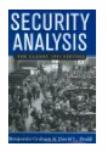
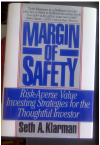
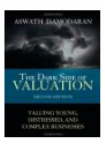
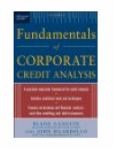
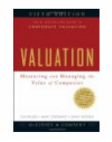
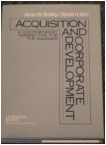

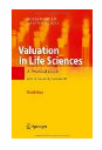

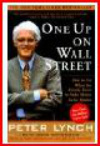
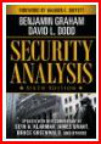
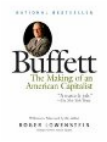
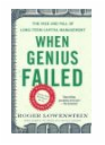
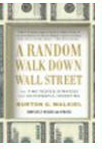









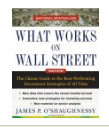


 RSS Feed
RSS Feed
